Basic information about the field
Area: 14,56 ha (A 7,53 ha + B 7,03 ha)
Soil type: humus rich sandy loam, humus rich fine silt
The field came for Mustiala’s cultivation fairly late, in 1960s. Before this, it used to be common grazing land. Field has been divided in two growing plots. It is difficult in shape. There are shady areas on the edge of forest. The barn side edge has a collective ditch, which can be seen as depression during wet times. The edge of the ditch is clayey, but the soil gets lighter (silt and silty loam) towards the field B.
The old fields 13 (Yhteislaidun) and 14 (Antin veräjä) have been combined to this field. There is part of field at the end, which has been suffering for dampness and is shaded by the forest. New drains have been installed and the part of the field is working better nowadays. Blue true clay was found during the excavations. This is a traditional oat field, damp and shady.
Crop rotation
2023 A: Silage grass, B: fava bean, Louhi
2022 A: Barley (protective crop); B: Autumn wheat
2021 A: Wheat and pea full grain silage, B: silage grass
Research and experiments
2023 Grass observation bands (Naturcom), clover test, undergrowth experiment with fava bean
Inter cropping and recycled fertilizer experiment (autumn wheat)
Cultivation activities
Cultivation activities
A: Silage grass
13.6.2023 Cutting clover squares
14.6.2023 Harvesting silage, yield 1008,43 kg ka/ha
16.6.2023 Harvesting silage, yield 1260,48 kg ka/ha
7.8.2023 Harvesting silage, yield 6042, 04 kg ka/ha
19.9.2023 Harvesting silage, yield 986,27 kg ka/ha

B: Fava bean
9.-11.5.2023 Cultivation
11.5.2023 Sowing: Louhi 319 kg/ha and undersown 10 kg/ha (Italian rye-grass 80% and white clover 20%)
16.9.2023 Harvest: yield 1878,66 kg/ha
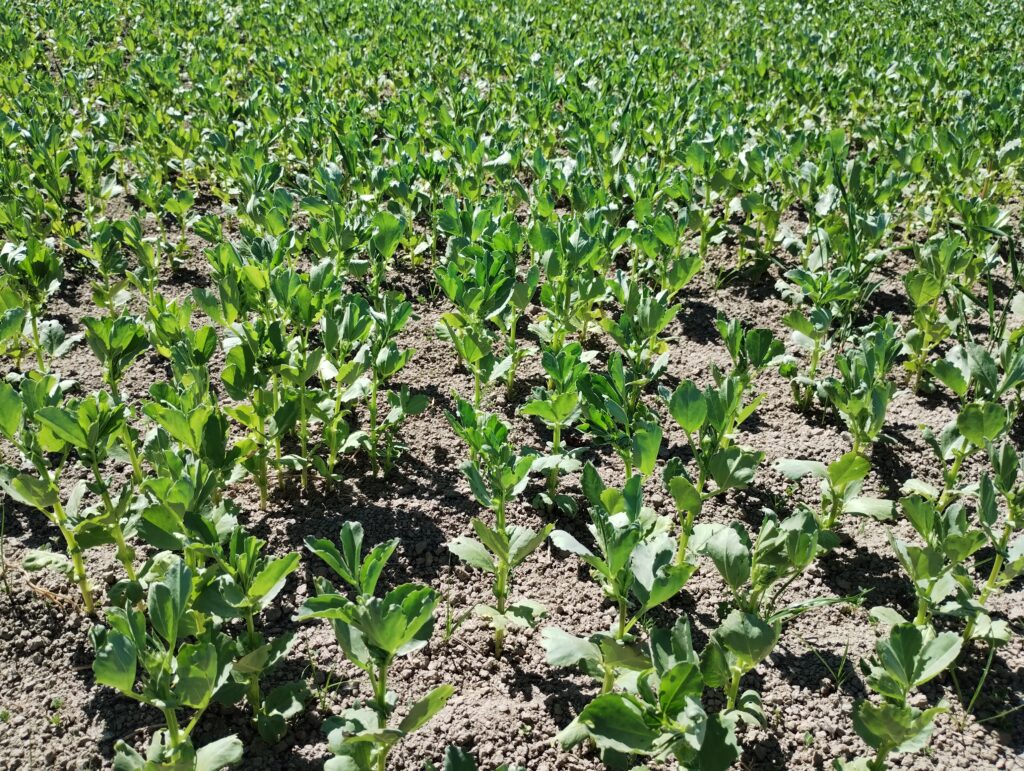
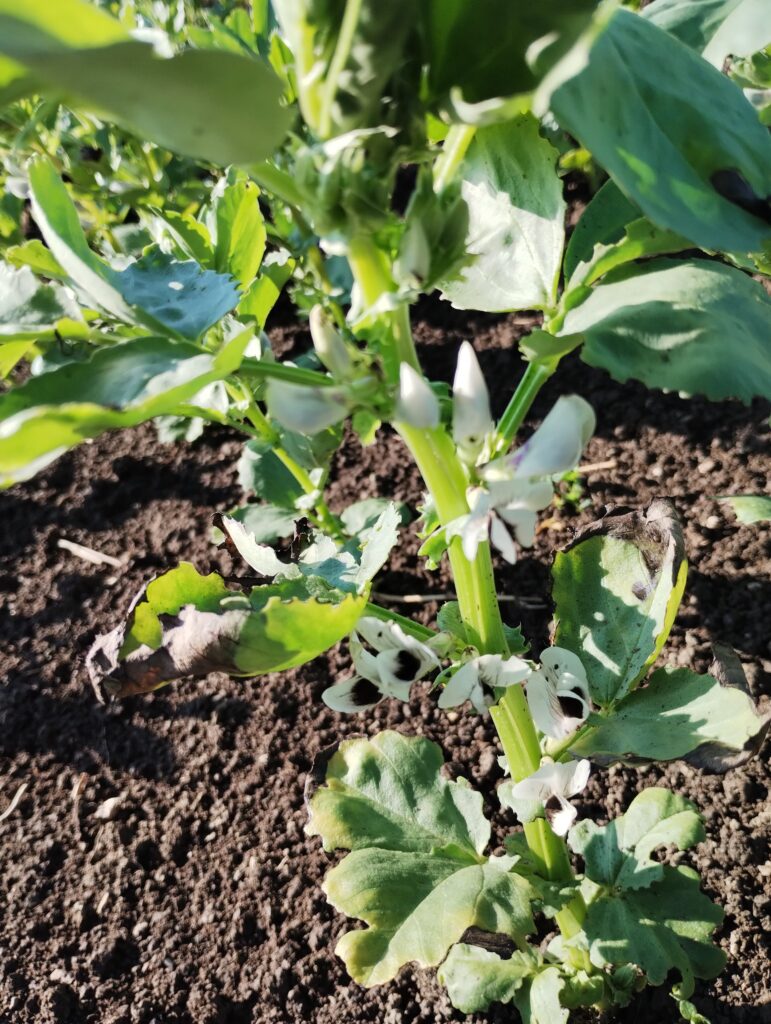
C: Oil radish
9.6.2023 Sowing; oil radish 20 kg/ha back part of the field to refurbishment plant
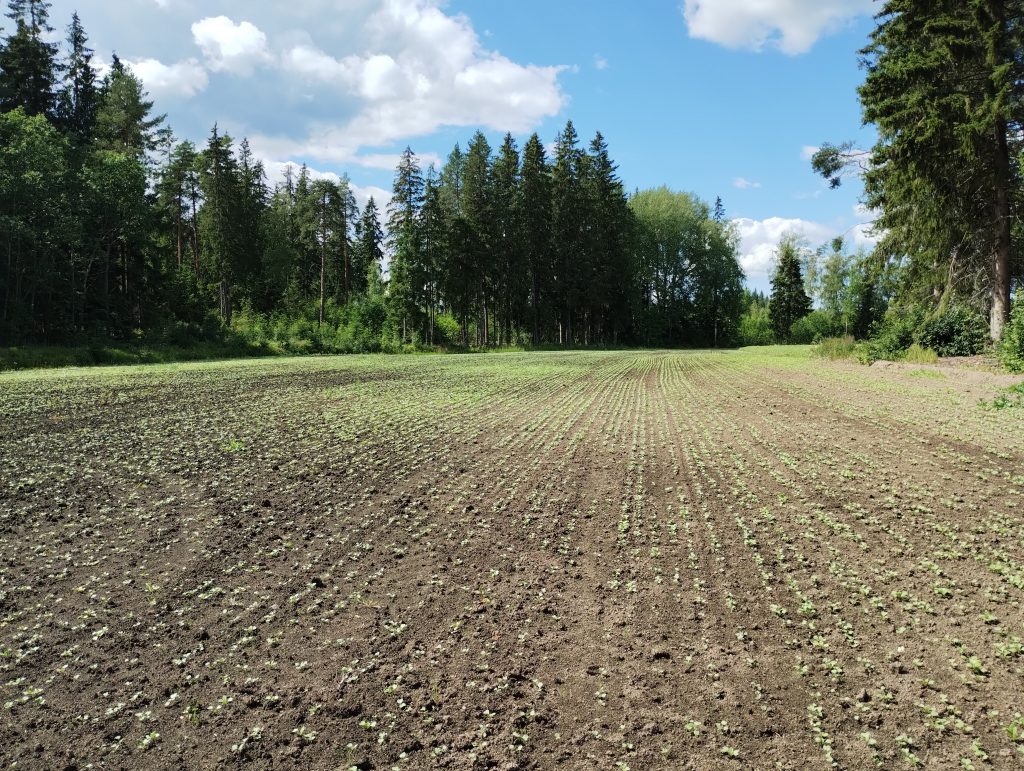
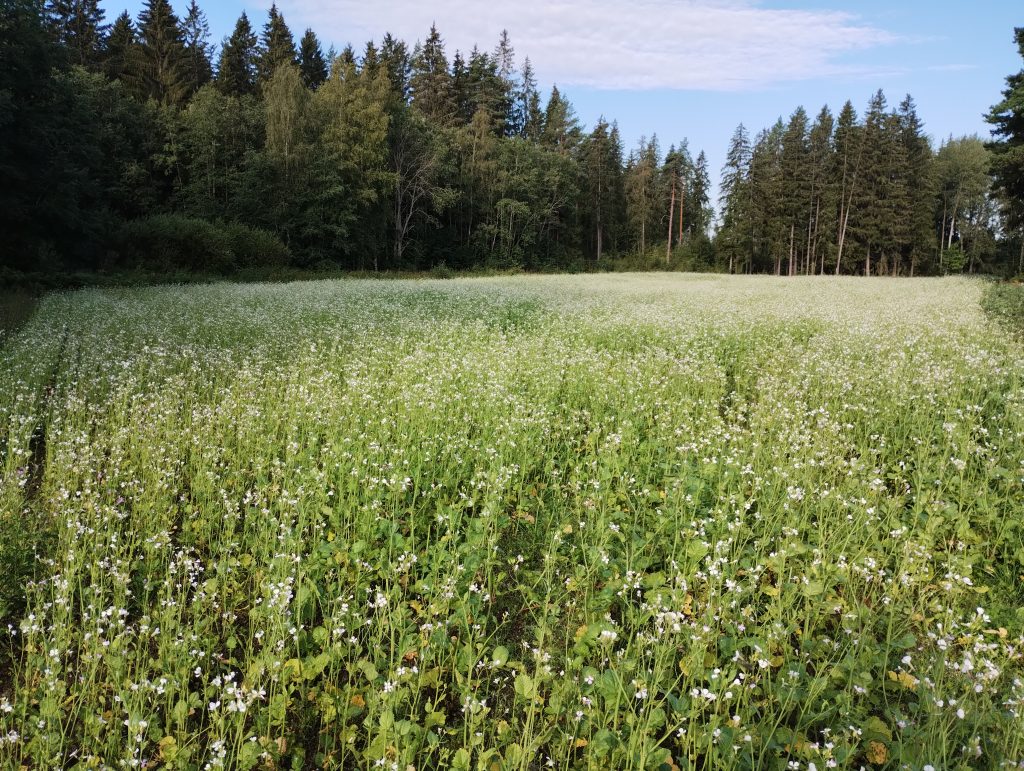
Cultivation activities
A: Barley, protective crop
16.5.2022 Evening the soil by harrowing
17.5.2022 Fertilizer, slurry cow manure 20 tn/ha
18.5.2022 Harrowing
19.5.2022 Harrowing
19.5.2022 Sowing: barley, RGT Planet
7.6.2022 Sowing: grass seed, sowing clover lanes
31.8.2022 Threshing, yield 2600 kg/ha
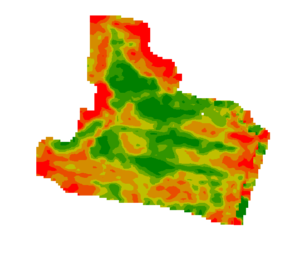
Yield map A, barley 2022
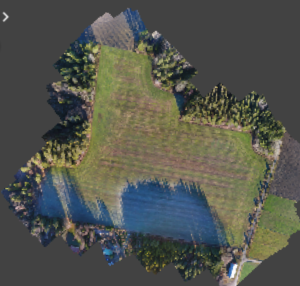
Drone image A 2022
B: Barley
20.5.2022 Harrowing
21.5.2022 Harrowing
21.5.2022 Sowing: barley, RGT Planet 250 kg/ha
9.9.2022 Threshing, yield 2700 kg/ha
14.9.2022 Plowing

Yield map B, barley 2022
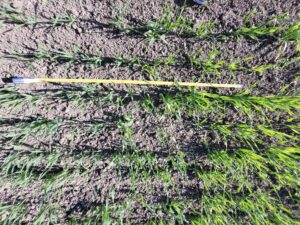
16.6. Field plot A. About 400-450 sprouts/m^2,
a bit more in some places. Growth not even
everywhere, patched. Sowing mistakes and
areas troubled by bad water economy. Not
much weeds at this point.
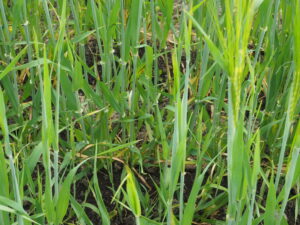
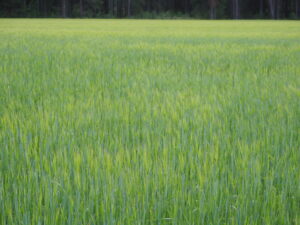
Cultivation activities
A: Whole grain silage, pea and wheat
19.3.2021 Liming 4 tn/ha
16.5.2021 Fertilizer, slurry cow manure 20,2 tn/ha
17.5.2021 Harrowing twice, goosefoot harrow
17.5.2021 Sowing, 240 kg/ha
27.7.2021 Harvesting whole grain silage, yield 2700 kg dm/ha
30.9.2021 Fertilizer, slurry cow manure 15 tn/ha
8.10.2021 Plowing
B: Silage frass
19.4.2021 Raking the grass
6.6.2021 Mowing
7.6.2021 Swathing and baling, yield 4877 kg dm/ha
9.6.2021 Fertilizer, slurry cow manure 40 tn/ha
22.7.2021 Harvesting silage, yield 2100 kg dm/ha
10.9.2021 Plowing
14.-15.9.2021 Harrowing; sowing (front part), autumn wheat Ceylon 260 kg/ha; fertilizer Yara Bio (8-4-2) 112 kg/ha
16.9. and 22.9.2021 Harrowing; sowing (back part), autumn wheat Ceylon 260 kg/ha; fertilizer (4-3-8) 250 kg/ha
Cultivation activities
Silage grass
5.5.2020 Fertilizer, slurry cow manure 20 tn/ha (part of the block)
5.5.2020 Evening the soil with harrow
26.5.2020 Harrowing, goosefoot harrow
27.5.2020 Fertilizer, slurry cow manure 20 tn/ha (rest of the block)
1.6.2020 Harrowing, goosefoot harrow
1.-2.6.2020 Sowing, fodder vetch 50 kg/ha, Italian rye-grass 8 kg/ha, oat Matty 100 kg/ha
26.8.2020 Harvesting whole grain silage
22.9.2020 Subsoiling, part of the block
3.10.2020 Plate harrow
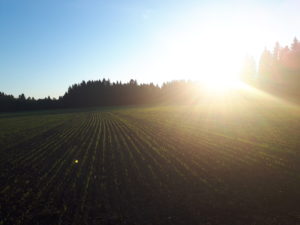
12.6.2020 One week from sowing and it is sprouting nicely
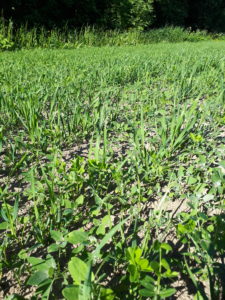
22.6.2020 Oat and vetch are growing well and evenly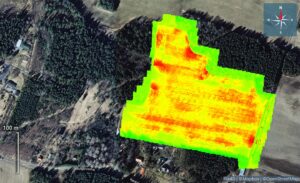
230620 edges of the forest are changing the color scale, yellow spots on the field are already good places.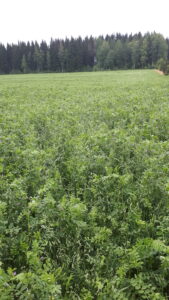
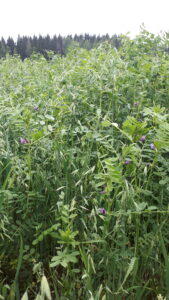
3.8.2020 Vetch is blooming. Growth looks good
Grass
13.6.2020 Mowing
13.6.2020 Swathing
13.6.2020 Harvesting silage
29.7.2020 Mowing
29.7.2020 Harvesting silage (part of the area), yield 2309 kg dm/ha
31.7.2020 Bailing (rest of the area)
15.9.2020 Harvesting silage, yield 985 kg dm/ha
22.9.2020 Subsoiling, part of the field
2.10.2020 Additional sowing, silage grass seed Mustiala 5 kg/ha, part of the area
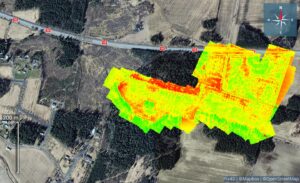
230620 image from the field before mowing the first harvest. On the bottom of the field, forest is confusing as good growth.
Fertility analysis 26.11.2021:
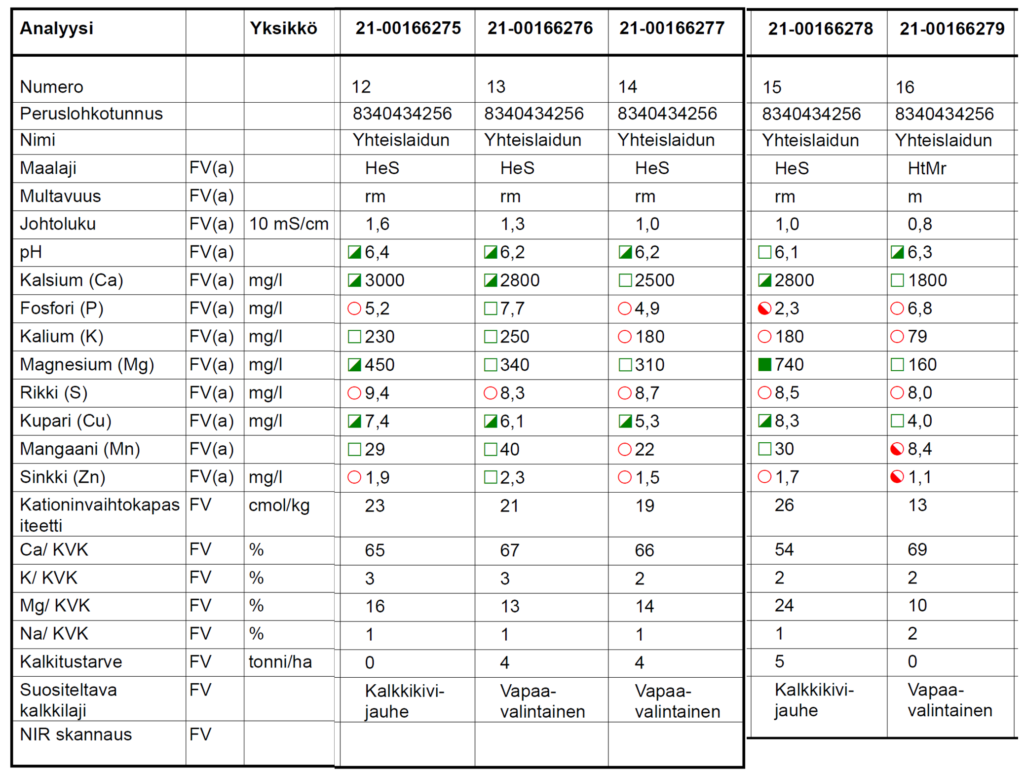
Vocabulary for reading fertility analysis:
Numero= number
Peruslohkotunnus= basic field id-number
Nimi= name
Maalaji= soil type
Multavuus= type of humus
Johtoluku= electrical conductivity
Kationinvaihtokapasiteetti= cation exchange capacity
Kalkitustarve= need for liming
Suositeltava kalkituslaji= recommended lime type
Hehkutushäviö= annealing loss
NIR skannaus= NIR scanning
Yksikkö= unit
Tonni= ton
Vapaavalintainen= free choice
Field Yhteislaidun (A and B) sampling lines 12-16:
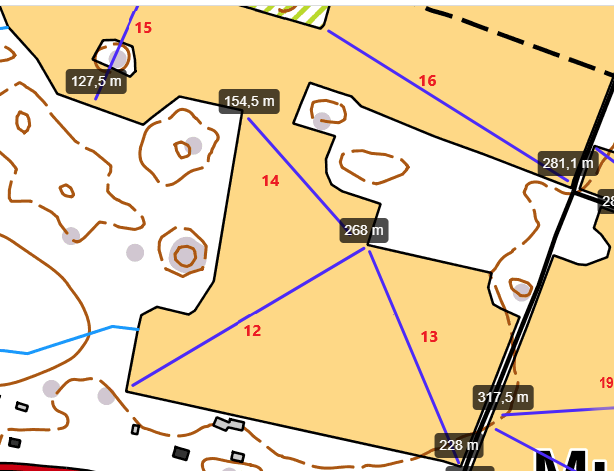
Field scanning: Yhteislaidun
2019 A: Barley and corn; B: silage grass
2018 A: Pea Rocket, oat Matty; B: barley, Elmeri (protective crop)
2017 Intercropping; oat Matty, barley Streif, silage grass
2016 Silage grass
2015 Perennial silage grass
2014 Perennial silage grass
2013 Perennial silage grass
2012 Oat Aslak + grass seed (timothy grass Tuure, tall fescue Karoliina and alfalfa Derby inoculated with Histick) and perennial silage grass
2011 Sugar beet Lincoln Cruiser, perennial silage grass and barley NFC Tipple
2010 Sugar beet Hamilton Poncho Beta, perennial silage grass and barley NFC Tipple
